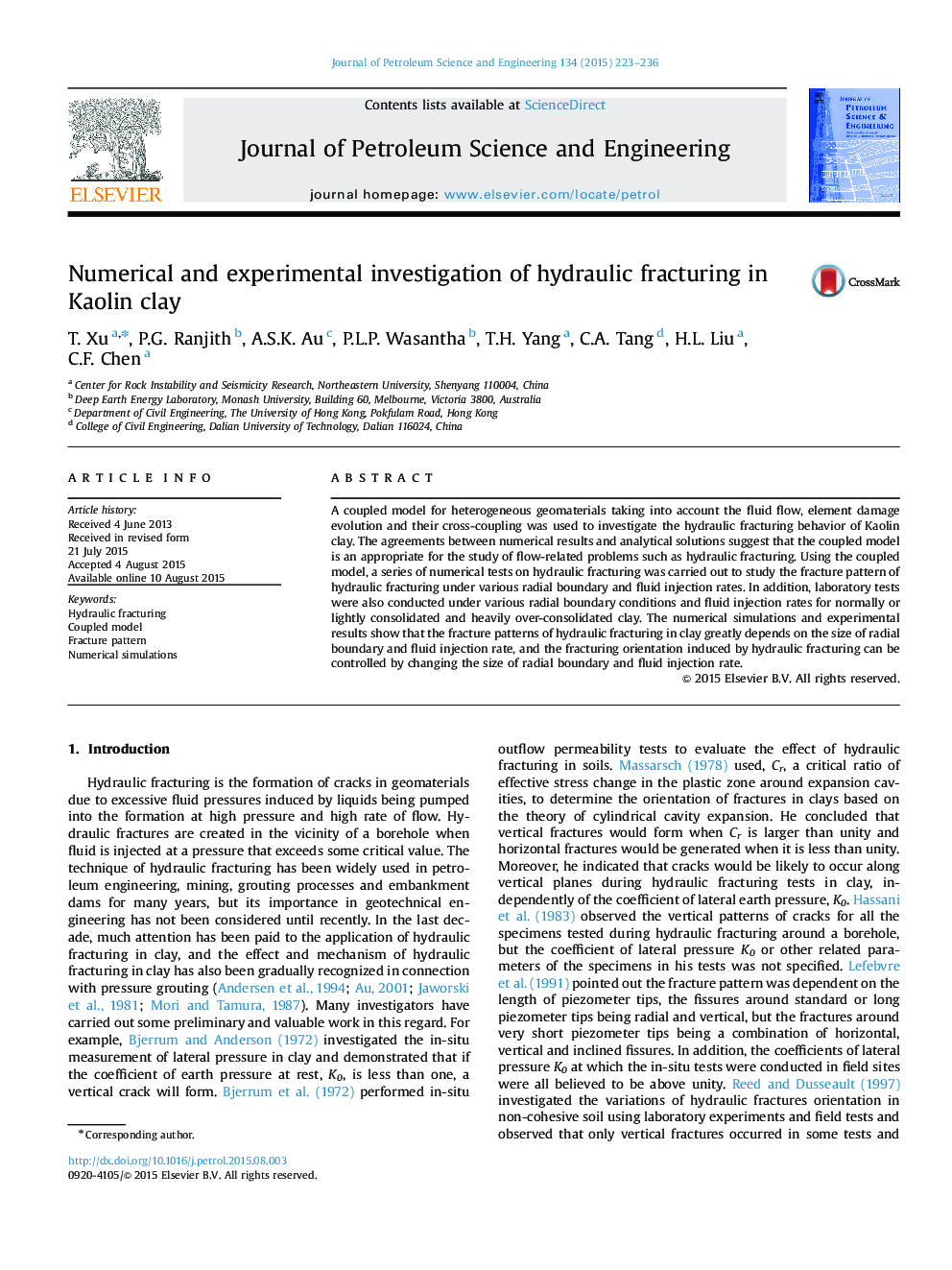| Article ID | Journal | Published Year | Pages | File Type |
|---|---|---|---|---|
| 1754683 | Journal of Petroleum Science and Engineering | 2015 | 14 Pages |
•Description of coupled model considering stress, damage and permeability.•Validation of the coupled model of stress, damage and permeability.•Investigation of the fracture pattern of hydraulic fracturing in clay and the influencing factors.•Comparisons between numerical simulations and laboratory tests.
A coupled model for heterogeneous geomaterials taking into account the fluid flow, element damage evolution and their cross-coupling was used to investigate the hydraulic fracturing behavior of Kaolin clay. The agreements between numerical results and analytical solutions suggest that the coupled model is an appropriate for the study of flow-related problems such as hydraulic fracturing. Using the coupled model, a series of numerical tests on hydraulic fracturing was carried out to study the fracture pattern of hydraulic fracturing under various radial boundary and fluid injection rates. In addition, laboratory tests were also conducted under various radial boundary conditions and fluid injection rates for normally or lightly consolidated and heavily over-consolidated clay. The numerical simulations and experimental results show that the fracture patterns of hydraulic fracturing in clay greatly depends on the size of radial boundary and fluid injection rate, and the fracturing orientation induced by hydraulic fracturing can be controlled by changing the size of radial boundary and fluid injection rate.
